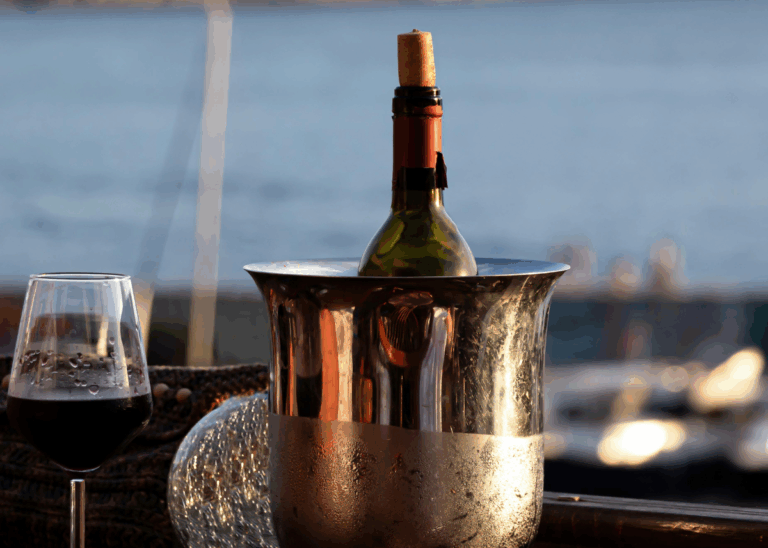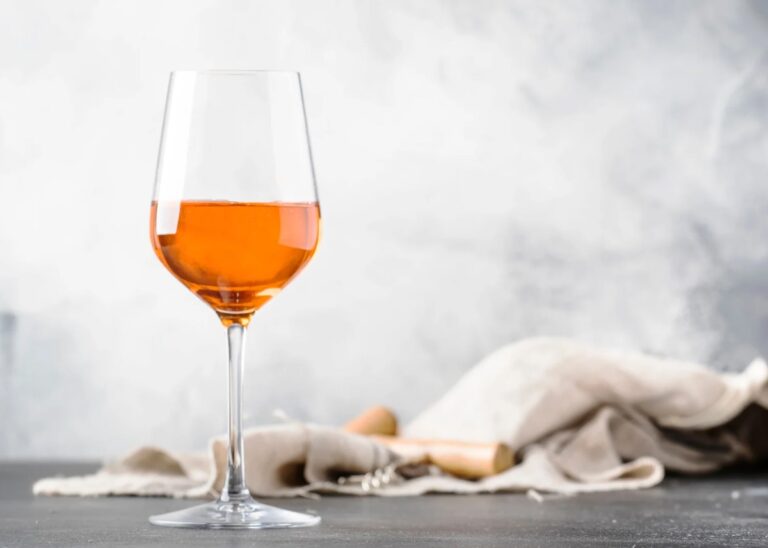[et_pb_section fb_built=”1″ _builder_version=”4.16″ _module_preset=”default” global_colors_info=”{}”][et_pb_row _builder_version=”4.16″ _module_preset=”default” global_colors_info=”{}”][et_pb_column type=”4_4″ _builder_version=”4.16″ _module_preset=”default” global_colors_info=”{}”][et_pb_video src=”https://youtu.be/lU9YLTxhQeo” _builder_version=”4.23.1″ _module_preset=”default” width=”75%” width_tablet=”85%” width_phone=”100%” width_last_edited=”on|phone” module_alignment=”center” global_colors_info=”{}”][/et_pb_video][et_pb_text _builder_version=”4.23.1″ _module_preset=”default” global_colors_info=”{}”]
Transcript:
00:00:00:00 – 00:00:25:21
Hello, bonjour, and welcome to your new Bonner Private Wines video, where we learn about wine weekly. Today I want to answer a question that I get quite often. What is vermouth? Or in other words. Is it wine or not? How is it made? It’s quite simple once you know, but you have to know. So let’s explain what is vermouth in very simple terms.
00:00:25:21 – 00:00:59:20
After this explanation, we will taste together this Argentine vermouth that you’re going to be receiving from the club, which will give you and us a good indication of what a vermouth tastes like beyond what it is, what type of flavors and aromas you should expect from this type of drink. Let’s go.
00:01:02:16 – 00:01:24:03
Yeah. It smells like grape juice to me with some herbs. But before we explain what is a vermouth and how it’s made, just the word on the origins of the product, it’s important to understand where it comes from as well. The inspiration for vermouth dates back from time immemorial. As far as antiquity and through the Middle Ages.
00:01:24:03 – 00:01:51:03
It was, it’s always been, very common to flavor wines with herbs and other botanicals to either enhance the flavors of the wine, give it something different, or to mask some faults perhaps too, because winemaking at the time wasn’t as precise than it is now. The Romans, the Greeks, probably even the Mesopotamians flavored their wines with plants. It’s a fact.
00:01:51:03 – 00:02:19:05
But the modern version of vermouth as we know it today originated in Italy, in the city of Turin. Today, you know, more specifically in the Piedmont region of northern Italy in the 18th century, where the locals had kept a really strong tradition from ancient times of mixing the abundant source of local wines with the many botanicals that are available from the nearby Alps mountains.
00:02:19:07 – 00:02:49:24
It’s really in Turin, and more broadly in northern Italy, that branded vermouth became a real popular thing. It became fashionable to have a glass of vermouth for medicinal purposes first, and just for pleasure as an aperitif later on. To this day, the biggest and most famous brands of vermouth are from northern Italy, like CinZano from Turin and of course, Martini & Rossi that’s also from Turin.
00:02:50:01 – 00:03:21:20
The French have also made vermouth for a very long time, generally also on this side of the Alps, because of all those plants that are available there. And of course, you have Spanish brands now and smaller local makers in many countries now, small craft, you know, vermouths in Canada, Australia, Oregon, California and even in Argentina, as we’ll see in a second.
00:03:21:22 – 00:03:53:19
Put simply, vermouth is an aromatized, fortified wine. That’s it. That’s all there is to know. If you’re unsure what this means, well, let’s explain how it’s made. The base is a wine. So fermented grape juice. Either red wine or white wine. This wine that in this case of vermouth is partially fermented and then fortified, meaning that they add some alcohol to it like a pure white alcohol, like a brandy or grappa.
00:03:53:19 – 00:04:22:14
In Italy, usually a neutral grape spirit is added to the wine before it’s totally fermented. This allows to elevate the percentage of alcohol around 17-18%, stop the fermentation and therefore retain some sweetness in the vermouth, hence them being “sweet”. Some makers, I believe, add a bit more sweet grape juice to their recipe, to the base, but the base is fermented unlike some other products.
00:04:22:14 – 00:04:53:08
This is how you’d make a fortified wine as well, like a port too. The difference is that then vermouth makers flavor the wine with botanicals. Each brand has their own unique ingredients and recipes, but they use aromatic herbs, roots and barks and even fruits. Sometimes typically star anise, or star anise, wormwood or absinthe, clove, cinnamon, ginger, citrus peels, licorice, coriander, and so on.
00:04:53:10 – 00:05:06:16
Many, many botanicals are used, and it gives vermouth its unique flavor.
00:05:06:18 – 00:05:35:07
To really taste the flavors of the vermouth and the specific brand with their unique recipe and identify whether you like one brand or another, you can drink it on its own. You’d have to serve it chilled at fridge temperature in this case, and we’ll get to that in a second. When we taste that particular one. For a more casual experience, of course, you can add some ice cubes to loosen up the intensity of flavors and the alcohol a bit.
00:05:35:07 – 00:06:04:19
It will dilute it a bit. Then, of course, vermouth is the base for many classic cocktail recipes. Some of the most popular cocktails, in fact, like Negroni or Americano or Manhattan and use sweet vermouth. Negroni is with gin, essentially Americano with sparkling water. Basically Manhattan vs rye whiskey and some bitters. The cocktail name Classic Martini or Dry Martini, uses a dry vermouth
00:06:04:21 – 00:06:39:12
rather, which is not entirely dry, but it’s called dry. It’s dryer, just like the vodka martini or the dirty martini that combines gin with vermouth. the dirty martini adds a bit of olive brine to it, with a salty touch. Very, very interesting. And those are just a few basic ideas. Let’s have a quick look at one of the simplest, but most delicious vermouth cocktail recipe that you can make with our vermouth makers and mixologist friends in Buenos Aires, Argentina.
00:06:39:12 – 00:07:02:21
How to make a super tonic. Let’s watch. Hi there, members of the bone. Our wine down. Now we’re going to make another simple vermouth based cocktail that you can replicate at home. You’re going to need a glass of wine and plenty of ice. Then we’re going to add three ounces of La Fuerza Rojo.
00:07:02:23 – 00:07:09:02
Two ounces of your favorite gin
00:07:09:04 – 00:07:42:11
you’re going to fill it to the top with tonic water. And last but not least, Rosemary. if you can, you can stir a little bit from the bottom to the top of the glass. Enjoy your summertime. Cheers. But let’s get to tasting this Argentine vermouth now, shall we say?
00:07:42:13 – 00:08:09:23
Vermouth was very popular in northern Italy, as we discussed, so it naturally also became very popular in Argentina, introduced by the Italian migrants to the country, which they were many. They came from Turin and Piedmont in particular, some of them. So it became a drink of choice in the fashionable salons of Buenos Aires, as well as it did in Italy, probably a little bit later.
00:08:10:02 – 00:08:40:14
So Argentina has had a long tradition of drinking vermouth as well. The one that we have here for you from the club is a small brand and maker that was started by four friends, a winemaker, a bartender and sommelier , a drinks industry journalist and drinks branding guy, and they wanted to use Argentine wine of course, to make their vermouth from Mendoza, near the Andes mountains and flavored with botanicals from the Andes Mountains, of which there are plenty.
00:08:40:14 – 00:09:12:04
They developed the recipe with 43 different botanicals, all from the Andes Mountains, and they opened a fashionable branded bar in Buenos Aires. And here’s the story behind the first vermouth. But let’s taste. It’s got a really, really nice and dark and big color intensity. And I guess we expected no less from the vermouth from Argentine Malbec. That’s the base wine let’s smell now.
00:09:12:06 – 00:09:42:06
Oh, wow. It’s very, very, very potent. Very, very powerful on the nose. Wow. The nose is super pungent. Very, very powerful. Aromas of herbs and spices. The dominant ones for me are juniper or orange peel as well. Those two are really the main focus, but there was also some star anise, sea, a bit of peppermint green tea, lime dried figs is important for me as well.
00:09:42:06 – 00:09:51:10
So overall it’s super, super punchy and super super spicy. But let’s taste.
00:09:51:12 – 00:10:17:11
Whoa whoa whoa. This is very, very powerful. It’s extremely concentrated. The base wine is dense and very rich to start with, and you can tell it’s oily, it’s textural, it’s got a decent amount of tannins, but they’re soft, so that’s good. But then it feels like they haven’t restrained the amount of spices and botanicals, that they put into this wine.
00:10:17:13 – 00:10:43:04
It’s very, very, very spicy. It’s got a ton of very herbal characters like thyme and rosemary. There’s plenty of bitterness as well. Like cinchona bark or cinchina, and a heap of citrus as well. That’s also come with the bitter feel from the skins of those citrus or citrus fruits. So. So overall, it’s extremely potent and quite a unique tasting experience, I have to say.
00:10:43:04 – 00:11:11:13
It’s so concentrated. I have never experienced anything like this I must admit. So many herbs and spices blended together with such concentration. It’s extraordinary. And now I do understand the name. better. La Fuerza means the strength in Spanish. So the power, well, it’s got plenty of this as well; pungent. I suspect this is definitely made for being mixed.
00:11:11:15 – 00:11:36:09
I would say blended a little to just tame it down and express, the power that it’s got a little bit better. So I would suggest adding at least a few rocks of ice to dilute it and make it even better. Or an easy suggestion would be to turn it into a spritz. That’s one of the simplest cocktail recipes that you can make with just ice and soda water.
00:11:36:09 – 00:12:05:09
Let’s watch how to make a vermouth spritz. Hi there. I’m hosting Gamze, co-founder of La Force. Almost. And I’m here at LA for signing bonuses. I want to show you how to make your own spritz at home. You just need La Fuerza Rojo vermouth, orange, some soda, seltzer or sparkling water. We’re gonna fill a glass with ice, a lot of ice.
00:12:05:11 – 00:12:21:22
Then we’re going to pour La Fuerza Rojo vermouth, nearly 70 or 80% of the glass. Then we’re gonna add some sparkling water or soda seltzer.
00:12:21:24 – 00:12:52:14
to finish, you want to put some sliced orange on? Ready to enjoy at home. And that was the simplest way to enjoy your vermouth in a cocktail. Really well explained. Another option would be a Negroni sbagliato, which means the mistaken Negroni. You add a bit of La Fuerza with a Prosecco Italian sparkling wine and that it’s going to lift things up and make it bubbly as well.
00:12:52:14 – 00:13:07:24
It should be extremely interesting and delicious. I’m actually going to try this myself tonight. Enjoy. We’ll see you soon in the wonderful world of wine. Cheers!
[/et_pb_text][/et_pb_column][/et_pb_row][/et_pb_section]



